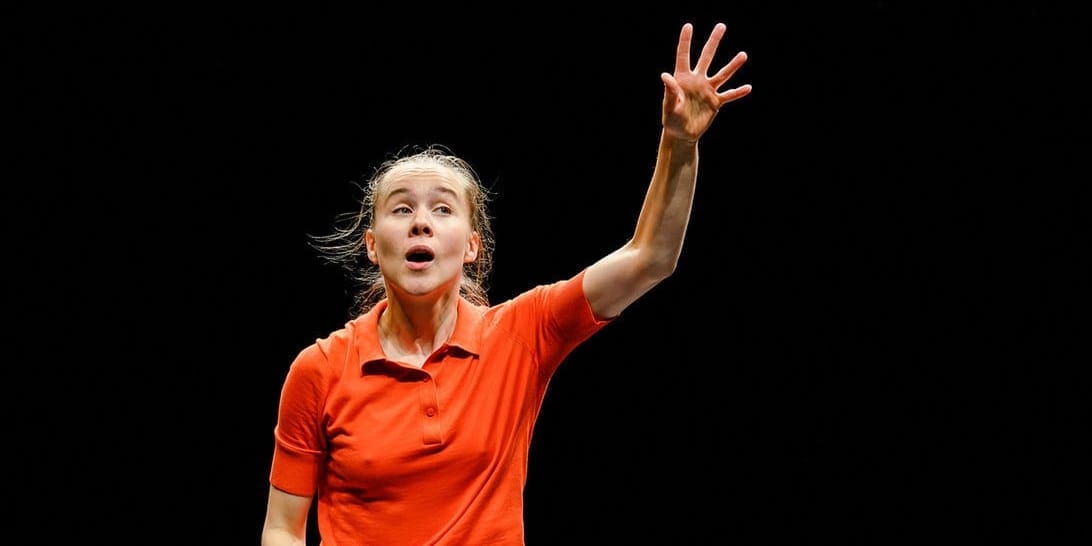In the context of the Festival d’Automne in Paris, Xavier Le Roy seizes the mythic Sacre du printemps and proposes a very original version of it. There is no ballet, only three dancers who successively come on stage to interpret a sequence of the partition. With a simplicity of means and expression, the choreographer takes leave of the famous version of Nijinsky to return to the beauty of the great music composed by Stravinsky.
In very simple and urban costumes (a red t-shirt, some black pants and some trainers), the performers come on, in turns, in to the foreground to metamorphose, in a way, into conductors. Everything begins when Xavier Le Roy watches the documentary Berlin Rhythm is it! and sees for the first time the conductor as ‘a potential dancer’. Then, he starts to explore the links between dance and music: their symbiosis and their harmony as well as their opposition, their conflicts and the hierarchy between these – the choreography often prevails on the composition. Here, this conception is questioned by an interesting and bold treatment. Dance and music are superimposed to form one and the same entity; if a dancer executes a wide and graceful movement that is because the composition lets us hear at the same time a very legato sequence. On the contrary, the more the music is staccato, the more the gesture is twitched. So Xavier Le Roy succeeds in reversing our perception and in giving to this beautiful music (which caused such a scandal at the time) the rightful place it deserves.
This great coincidence between the two main components of the show is mostly visible in the interpretation of Salka Ardal Rosengren, who is clearly distinguished from the others. During her performance, you have the sensation that she creates a perfect harmony between the movement and the composition, in a very hypnotic way. Her interpretation leads to a beautiful moment – a moment that, in my view, is not exploited enough: the music stops but she continues her dance as if nothing has happened and seems to enter gradually into a form of trance!
But after this moment of grace, the founding bias of the show – that is to say this succession of soli in the foreground – finally runs out of steam. In fact, the whole show is based on an accident: because of time constraints, the choreographer decided to rewrite the Sacre (2007) for three interprets. But the performance remains too closed to this original accident. I wish that the collective moments were slightly more present and, mostly, less improvised (there were a few floating times when the three performers seem not to know what to do). The use of space looks is not efficient; in quite a deep and large theatre, it is a shame to use almost exclusively the foreground.
Despite the dubious stage bias, it remains a sensitive and moving show, mainly carried by the interpretation of Salka Ardal Rosengren. Sacre du printemps expertly allows us to hear Stravinsky’s great work in a different way.

